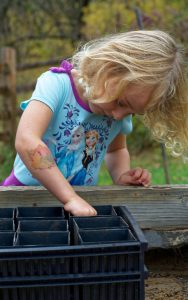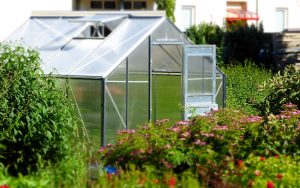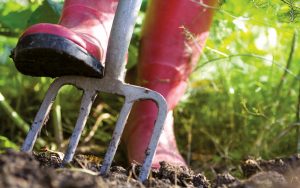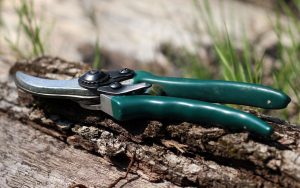Menu
As the nights are noticeably drawing in and some mornings take on a definite autumnal chill, our minds turn to autumn jobs for the garden. Officially, of course, the autumn equinox is usually 22nd September but many gardeners tend to think of September as the first autumn month. At this time of year, those jobs tend to be a combination of keeping the late-summer flowers going for as long as possible, while also starting to plan ahead for next year. Here is our round-up of the top five things you can be thinking about this month.
 As flowers start to fade and set seed, now is a good time to start collecting your favourites ready to grow again next year. It’s particularly useful to collect seeds from annual plants (which live for one year only) or from biennials (which germinate one year and flower the next); although they might set seed naturally, collecting and sowing the seeds yourself gives you control of where they grow. Of course, collecting seeds from perennial plants is also a useful way to increase your stock.
As flowers start to fade and set seed, now is a good time to start collecting your favourites ready to grow again next year. It’s particularly useful to collect seeds from annual plants (which live for one year only) or from biennials (which germinate one year and flower the next); although they might set seed naturally, collecting and sowing the seeds yourself gives you control of where they grow. Of course, collecting seeds from perennial plants is also a useful way to increase your stock.
Seeds are usually ready to collect when they have changed from green to brown or black. When you can, collect seeds on a dry day. It can be a good idea to spread them on a tray and leave them somewhere (like an airing cupboard) to dry thoroughly before you store them. Then store them in small paper bags or envelopes, carefully labelled, ready for planting at the appropriate time. For most seeds, keep them in a dry, dark place. (I hang on to those little packets of silica gel that you sometimes get as moisture can make seeds go mouldy).
Don’t collect all the seeds in your garden; leave some for the wildlife and their frosty beauty! Sunflower seed heads are a particular favourite with birds, especially finches and tits.
For more detailed advice on collecting seeds (and nuts and berries) we’d recommend this article from the Royal Horticultural Society (RHS).
Did you know that Seed Gathering Season runs for a month from 23rd September? Read more about it in this piece from the UK Tree Council.
 September can be a dry month. Here in the Solent area, we only get around 53mm of rainfall, compared with over 86mm in an average October*. If we do want to keep those summer flowers going until the frosts arrive, it’s important to keep watering them regularly. (Deadheading and feeding, particularly for pots and baskets, is essential too). If you’ve planted anything new, keep that regularly watered as well, until it becomes established. Where you can, use rainwater or grey water (for example, cooled washing up water) rather than tap water. (Read the RHS advice on using grey water in the garden here.)
September can be a dry month. Here in the Solent area, we only get around 53mm of rainfall, compared with over 86mm in an average October*. If we do want to keep those summer flowers going until the frosts arrive, it’s important to keep watering them regularly. (Deadheading and feeding, particularly for pots and baskets, is essential too). If you’ve planted anything new, keep that regularly watered as well, until it becomes established. Where you can, use rainwater or grey water (for example, cooled washing up water) rather than tap water. (Read the RHS advice on using grey water in the garden here.)
While we’re keeping up the watering outdoors, now is the time to start reducing the frequency that you water your indoor plants. In general, with the daylight hours reducing, houseplants become less active so are likely to require less water. Remember that houseplants are less affected by dropping temperatures at this time of year as most of us click the heating on when it starts to cool down! All plant varieties are different, of course, so check for any specific advice if you have any unusual or fussy specimens.
 Cleaning
CleaningLooking ahead to a new gardening year, now is a good time to clean up cold frames or greenhouses as they become empty ready for use later in the autumn for over-wintering pots, or for next spring. Use a solution of soap or disinfectant to clear away any green mould, pests and grime – and don’t forget to do the outside as well as the inside. Gardeners World have a useful step-by-step guide to cleaning your greenhouse if you want further tips.
As pots become empty, if you’re not going to reuse them immediately, it’s good to give them a good clean as well. Again, use a solution of soap or disinfectant to ensure any pests and diseases have been killed off. Then, once dry, store the pots in a dry place ready for when you want to use them next.

Another enjoyable job that helps us look ahead to spring sunshine is planting for the coming year. Now is the time to plant spring flowering bulbs (such as crocuses, daffodils, bl
uebells and snake’s-head fritillaries) in pots, borders or scattered into lawns. (Tulips are better planted in November). As a rough guide, plant the bulb about three times the depth of the bulb itself (although you can play around with that if you’re cramming bulbs into pots for a ‘one season only’ show-stopper display!).
Now is also a good time to start thinking about sowing hardy annual and spring bedding seeds for flowering early next spring/summer. These might include ammi, cornflowers, pansies, wallflowers and forget-me-nots, to name just a few.
Finally, if your summer bedding is starting to look a bit ‘gappy’, why not pot up a container with autumn-flowering hardy cyclamen, heathers or echinacea to fill those holes (and provide some late nectar sources for pollinating insects)?
As well as flowering plants, our Titchfield garden centre also has a great selection of grasses and conifers for autumn and winter colour and structure.
Many soft fruits and berries seem to have cropped really well this year, perhaps a combination of generally warm weather but also quite a lot of rain in late spring and into summer! As your berry bushes finish fruiting, now is the time to prune them ready for next year’s fruiting.
 Blackberries and their hybrids (like tayberries and loganberries) as well as summer-fruiting raspberries can all be treated in the same way. These berries produce fruit on canes that have grown this year. Therefore, cut down to the ground any canes that bore fruit this year; you can usually spot these as they have turned more brown and ‘twiggy’ whereas this year’s growth will look greener. Having cut out the old growth, then trim the new growth to leave between four and six healthy canes per plant. Focus on leaving the stronger growth and remove any crossing or weak looking canes. Then you can tie in the healthy new canes.
Blackberries and their hybrids (like tayberries and loganberries) as well as summer-fruiting raspberries can all be treated in the same way. These berries produce fruit on canes that have grown this year. Therefore, cut down to the ground any canes that bore fruit this year; you can usually spot these as they have turned more brown and ‘twiggy’ whereas this year’s growth will look greener. Having cut out the old growth, then trim the new growth to leave between four and six healthy canes per plant. Focus on leaving the stronger growth and remove any crossing or weak looking canes. Then you can tie in the healthy new canes.
Please note that autumn-fruiting raspberries, gooseberries and currant bushes should be treated differently and are not pruned at this time. We’ll write about how to prune them in a future article.
More for September:
What to plant in September – ornamental grasses
Conifer Week each September is time to think again about these often under-rated plants?
Our tips on preparing your garden for while you are away
Time for some lawn maintenance? Check our lawncare calendar
Hambrooks garden design, landscaping & garden maintenance throughout Hampshire for over 50 years.

